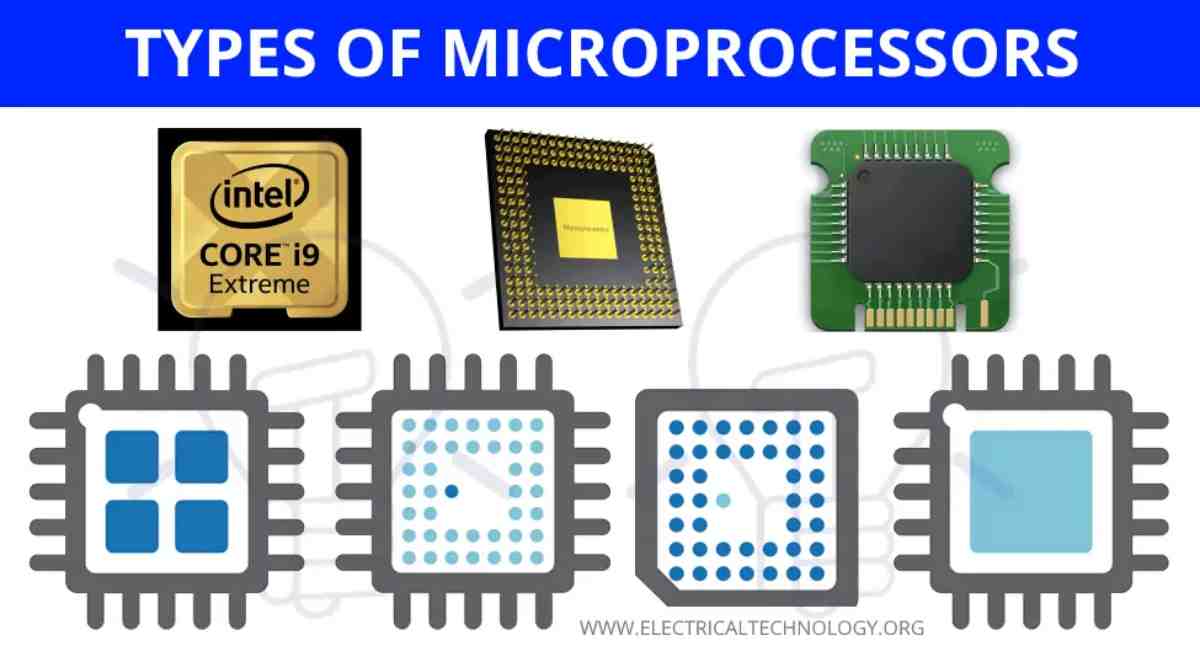A microprocessor is an critical part of a computer’s architecture, with out that you can’t do anything on your pc. It is a programmable tool that takes enter, plays mathematics and good judgment operations on it, and produces the desired output. Simply positioned, a microprocessor is a virtual device on a chip which could extract commands from memory, decode them, execute them, and supply results.
Table of Contents
Microprocessor Basics
A microprocessor takes a bunch of machine language instructions and executes them, telling the processor what to do. The microprocessor does three basic things when executing the instruction:
- It performs some basic operations like addition, subtraction, multiplication, division, and some logical operations using its logical arithmetic unit (ALU). Newer microprocessors also perform operations on floating-point numbers.
- Data on microprocessors can be move from one place to another.
- It has a program counter register (PC) that stores the address of the next instruction according to the value of the PC; the microprocessor jumps from one place to another and makes decisions.
We do not have a 128-bit microprocessor working at the moment; one of the reasons is that we are far from exhausting the 64-bit address space itself. We are using it at a constant speed of about 2 bits every three years. Right now, we have only used 48 bits over 64 bit, so why require a 128-bit address space? Also, the 128-bit microprocessor could be an awful lot slower than the 64-bit microprocessor.
Processor types:
Complex Instruction Set Computer (Cisco)
CISC or Complex Instruction Set Computer is the computer architecture where the instructions are such that a single instruction can perform multiple low-level operations such as loading from memory, storing in memory or arithmetic operations, etc. You have multiple routing nodes within a single statement. The.CISC uses very few registries.
Reduced Instruction Set Computer (RISC)
RISC or Reduced Instruction Set of Computer is a computing structure in which instructions are easy and designed to be execute quick.
The instructions are completed in a clock cycle. This is due to the optimization of the instruction and the pipeline (a technique that allows the simultaneous execution of parts, or steps, of instructions, processes the instructions more efficiently). RISC uses multiple registers to avoid important interactions with memory. It has few routing nodes.
Explicitly Parallel Instruction Computing (Epic)
EPIC or Explicitly Parallel Instruction Computing allows computers to execute instructions in parallel using compilers. It allows the execution of complex instructions without using higher clock speeds. EPIC encodes its instructions in 128-bit packets. each packet contains three instructions that are encoded at 41 bits each and a 5-bit pattern field (contains information about the types of instructions in a packet and which instructions can be executed in parallel)
Microprocessors and firmware are two important new topics in the design and development of computer systems. This article looks at the relationship between these two issues. Microprocessors have been used in the design of firmware systems that emulate minicomputers, act as high-speed controllers, handle special tasks in areas such as signal processing and simulation, and enable power distribution.
Micro programmable computers can, in turn, provide valuable assistance in the design of microprocessors, other associated devices, microprogrammed systems, and ordinary microprocessor systems.

